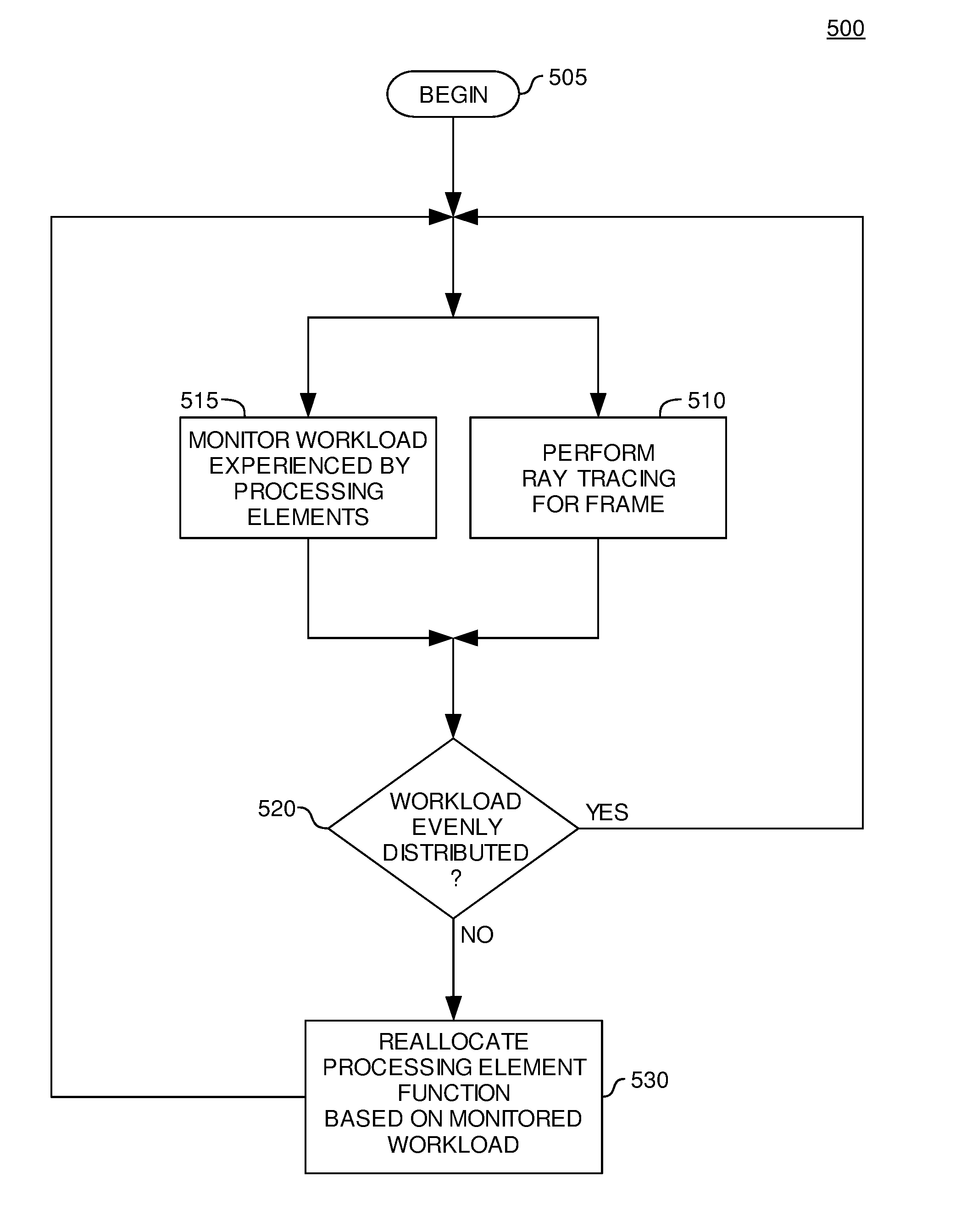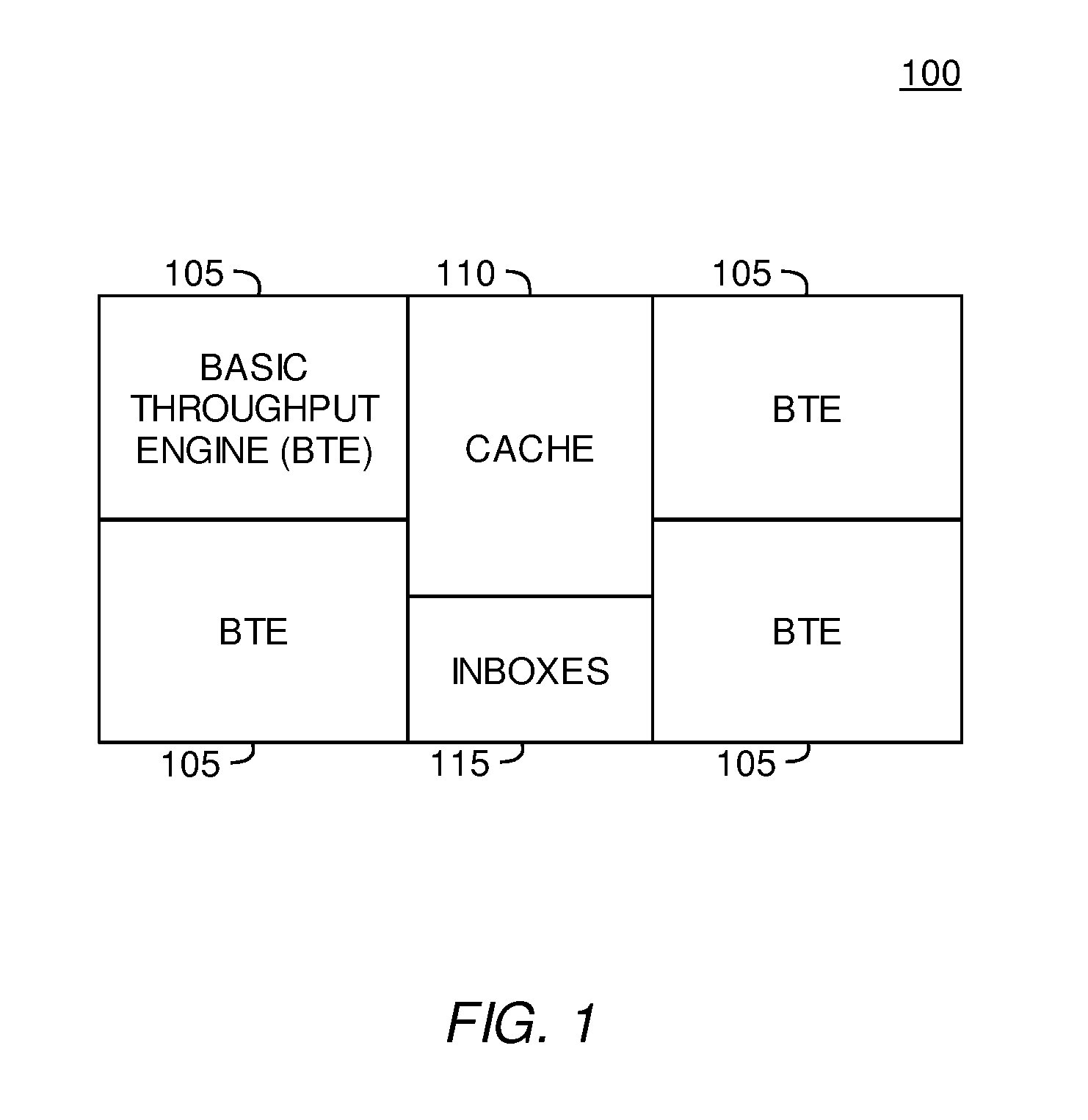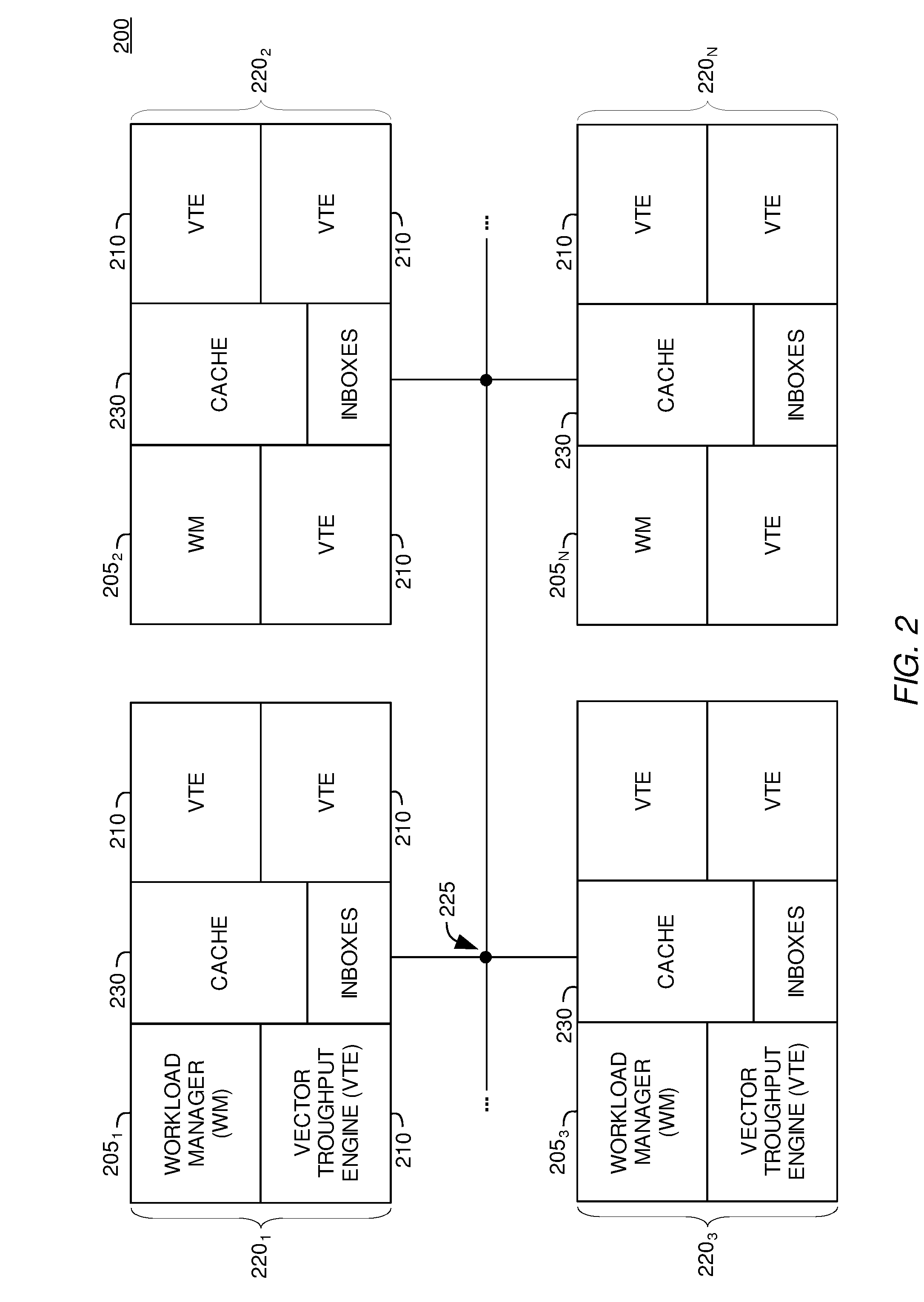Dynamic reallocation of processing cores for balanced ray tracing graphics workload
a ray tracing and graphics workload technology, applied in the field of computer processing, can solve the problems of rasterization suffering from some drawbacks, using relatively low amounts of computational power, and modern monitors display images
- Summary
- Abstract
- Description
- Claims
- Application Information
AI Technical Summary
Problems solved by technology
Method used
Image
Examples
Embodiment Construction
[0022]Embodiments of the invention provide methods and apparatus for monitoring and reallocating processor element resources in an image processing system to achieve balanced ray tracing workload, according to one embodiment of the invention. According to one embodiment of the invention, an image processing system may use a plurality of processing elements to render a two dimensional image from a three dimensional scene. A first portion of the processing elements may perform operations related to tracing a ray through a spatial index, while a second portion of the processing elements may perform operations related to determining if a ray intersects a primitive located within a particular bounding volume. The characteristics of the three dimensional scene being rendered by the image processing system may change over time. These changes may require more operations relating to tracing rays through the spatial index, or may require more operations relating to determining if rays interse...
PUM
 Login to View More
Login to View More Abstract
Description
Claims
Application Information
 Login to View More
Login to View More - R&D
- Intellectual Property
- Life Sciences
- Materials
- Tech Scout
- Unparalleled Data Quality
- Higher Quality Content
- 60% Fewer Hallucinations
Browse by: Latest US Patents, China's latest patents, Technical Efficacy Thesaurus, Application Domain, Technology Topic, Popular Technical Reports.
© 2025 PatSnap. All rights reserved.Legal|Privacy policy|Modern Slavery Act Transparency Statement|Sitemap|About US| Contact US: help@patsnap.com



